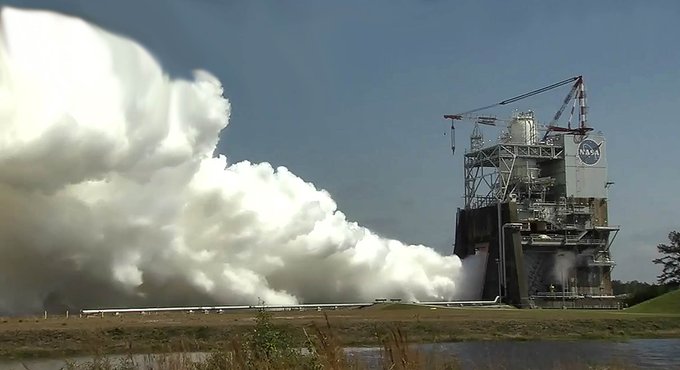
NASA engineers conduct a test of the first RS-25 engine controller that will be used on an actual Space Launch System flight on the A-2 Test Stand at Stennis Space Center on March 23, 2017. The RS-25 engine, with the flight controller, was test fired for a full-duration 500 seconds. Credits: NASA/SSC
Engineers carried out a critical hot fire engine test firing with the first new engine controlling 'brain' that will command the shuttle-era liquid fueled engines powering the inaugural mission of NASA's new Space Launch System (SLS) megarocket.
The first integrated SLS launch combining the SLS-1 rocket and Orion EM-1 deep space crew capsule could liftoff as soon as late 2018 on a mission around the Moon and back.
The full duration static fire test involved an RS-25 engine integrated with the first engine controller flight unit that will actually fly on the maiden SLS launch and took place on Thursday, March 23 at the agency's Stennis Space Center in Bay St. Louis, Mississippi.
The 500 second-long test firing was conducted with the engine controller flight unit installed on RS-25 development engine no. 0528 on the A-2 Test Stand at Stennis.
The engine controller is the 'brain' that commands the RS-25 engine and communicates between the engine and the SLS rocket. It is about the size of a dorm refrigerator.
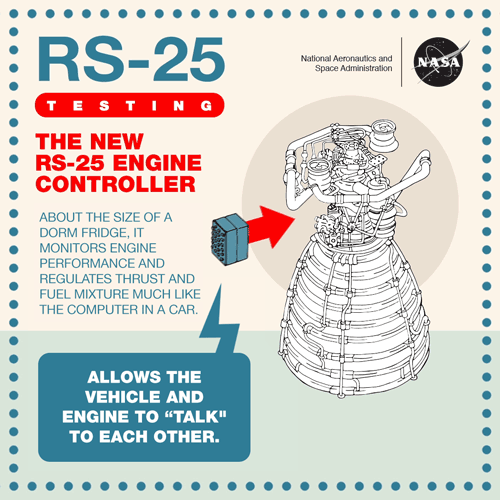
RS-25 new engine controller. Credit: NASA/SSC
The newly developed engine controller is a modern version from the RS-25 controller that helped propel all 135 space shuttle missions to space.
"This an important – and exciting – step in our return to deep space missions," Stennis Director Rick Gilbrech said. "With every test of flight hardware, we get closer and closer to launching humans deeper into space than we ever have traveled before."
The modernized RS-25 engine controller was funded by NASA and created in a collaborative effort of engineers from NASA, RS-25 prime contractor Aerojet Rocketdyne of Sacramento, California, and subcontractor Honeywell of Clearwater, Florida.
"The controller manages the engine by regulating the thrust and fuel mixture ratio and monitors the engine's health and status – much like the computer in your car," say NASA officials.
"The controller then communicates the performance specifications programmed into the controller and monitors engine conditions to ensure they are being met, controlling such factors as propellant mixture ratio and thrust level."
A quartet of RS-25 engines, leftover from the space shuttle era and repeatedly reused, will be installed at the base of the core stage to power the SLS at liftoff, along with a pair of extended solid rocket boosters.
The four RS-25 core stage engine will provide a combined 2 million pounds of thrust at liftoff.
In addition to being commanded by the new engine controller, the engines are being upgraded in multiple ways for SLS. For example they will operate at a higher thrust level and under different operating conditions compared to shuttle times.
To achieve the higher thrust level required, the RS-25 engines must fire at 109 percent of capability for SLS compared to operating at 104.5 percent of power level capability for shuttle flights.
The RS-25 engines "also will operate with colder liquid oxygen and engine compartment temperatures, higher propellant pressure and greater exhaust nozzle heating."
SLS will be the world's most powerful rocket and send astronauts on journeys into deep space, further than human have ever travelled before.
For SLS-1 the mammoth booster will launch in its initial 70-metric-ton (77-ton) Block 1 configuration with a liftoff thrust of 8.4 million pounds - more powerful than NASA's Saturn V moon landing rocket.
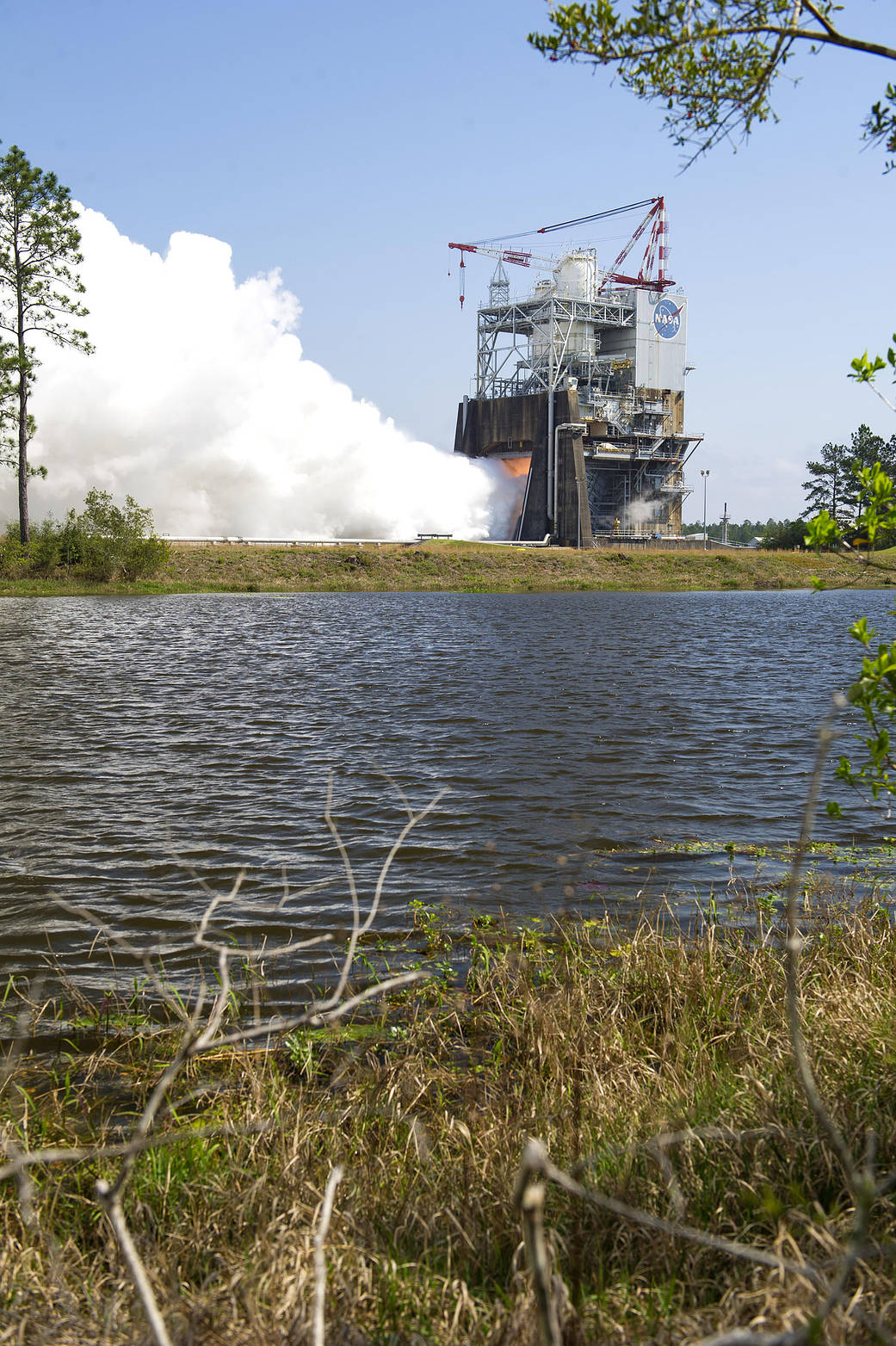
NASA engineers conduct a test of the first RS-25 engine controller that will be used on an actual Space Launch System flight on the A-2 Test Stand at Stennis Space Center on March 23, 2017. The RS-25 engine, with the flight controller, was test fired for a full-duration 500 seconds. Credits: NASA/SSC
The next step is evaluating the engine firing test results, confirming that all test objectives were met and certifying that the engine controller can be removed from the RS-25 development engine and then be installed on one of four flight engines that will help power SLS-1.
During 2017, two additional engine controllers for SLS-1 will be tested on the same development engine at Stennis and then be installed on flight engines after certification.
Finally, "the fourth controller will be tested when NASA tests the entire core stage during a "green run" on the B-2 Test Stand at Stennis. That testing will involve installing the core stage on the stand and firing its four RS-25 flight engines simultaneously, as during a mission launch," says NASA.
Numerous RS-25 engine tests have been conducted at Stennis over more than 4 decades to certify them as flight worthy for the human rated shuttle and SLS rockets.
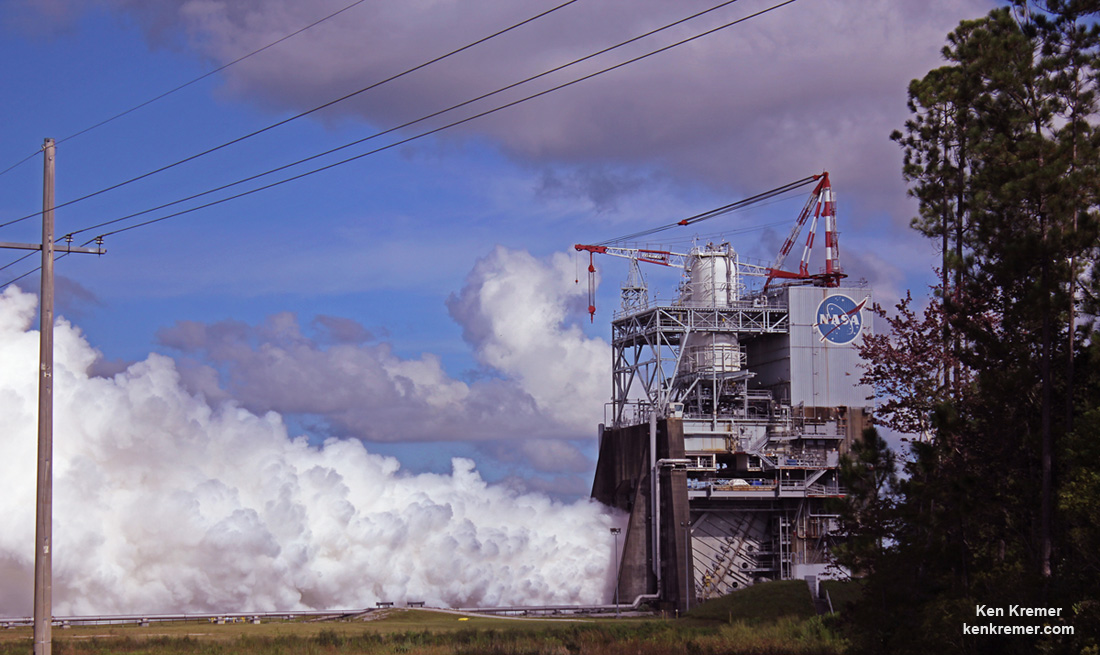
NASA engineers successfully conducted a development test of the RS-25 rocket engine Thursday, Aug. 18, 2016 at NASA's Stennis Space Center near Bay St. Louis, Miss. The RS-25 will help power the core stage of the agency's new Space Launch System (SLS) rocket for the journey to Mars. Credit: Ken Kremer/kenkremer.com
Although NASA is still targeting SLS-1 for launch in Fall 2018 on an uncrewed mission, the agency is currently conducting a high level evaluation to determine whether the Orion EM-1 capsule can be upgraded in time to fly a mission before the end of 2019 - as I reported here.
The Orion EM-1 capsule is currently being manufactured at the Neil Armstrong Operations and Checkout Building at the Kennedy Space Center by prime contractor Lockheed Martin.
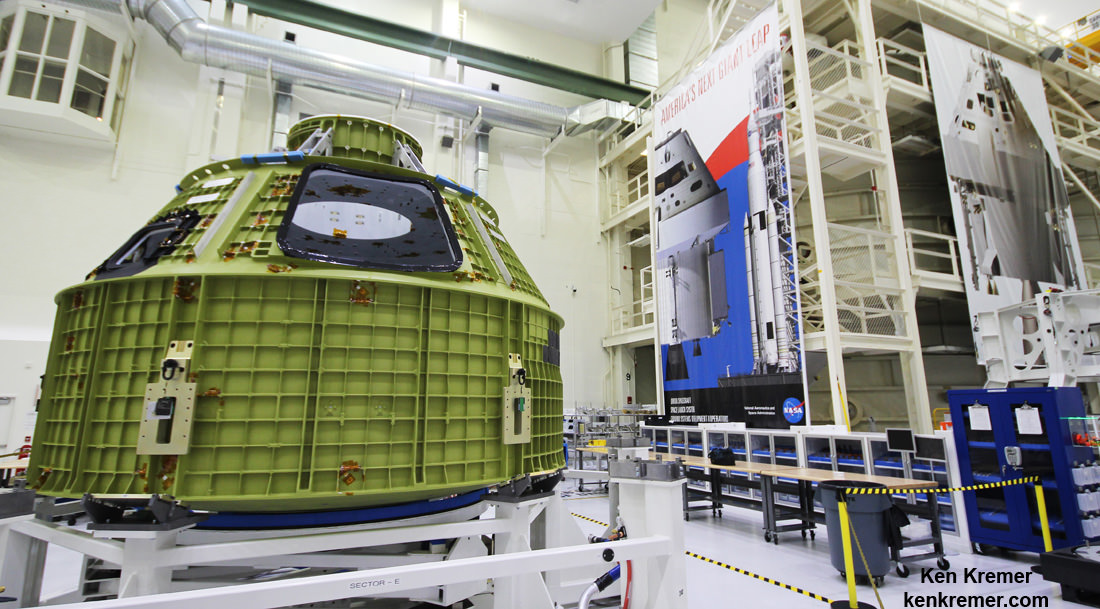
Orion crew module pressure vessel for NASA's Exploration Mission-1 (EM-1) is unveiled for the first time on Feb. 3, 2016 after arrival at the agency's Kennedy Space Center (KSC) in Florida. It is secured for processing in a test stand called the birdcage in the high bay inside the Neil Armstrong Operations and Checkout (O&C) Building at KSC. Launch to the Moon is slated in 2018 atop the SLS rocket. Credit: Ken Kremer/kenkremer.com
Stay tuned here for Ken's continuing Earth and Planetary science and human spaceflight news.
Ken Kremer

Aerojet Rocketdyne technicians inspect the engine controller that will be used for the first integrated flight of NASA's Space Launch System and Orion in late 2018. The engine controller was installed on RS-25 development engine no. 0528 for testing at Stennis Space Center on the A-2 Test Stand on March 23, 2017. The RS-25 engine, with the flight controller, was test fired for a full-duration 500 seconds. Credits: NASA/SSC
No comments:
Post a Comment